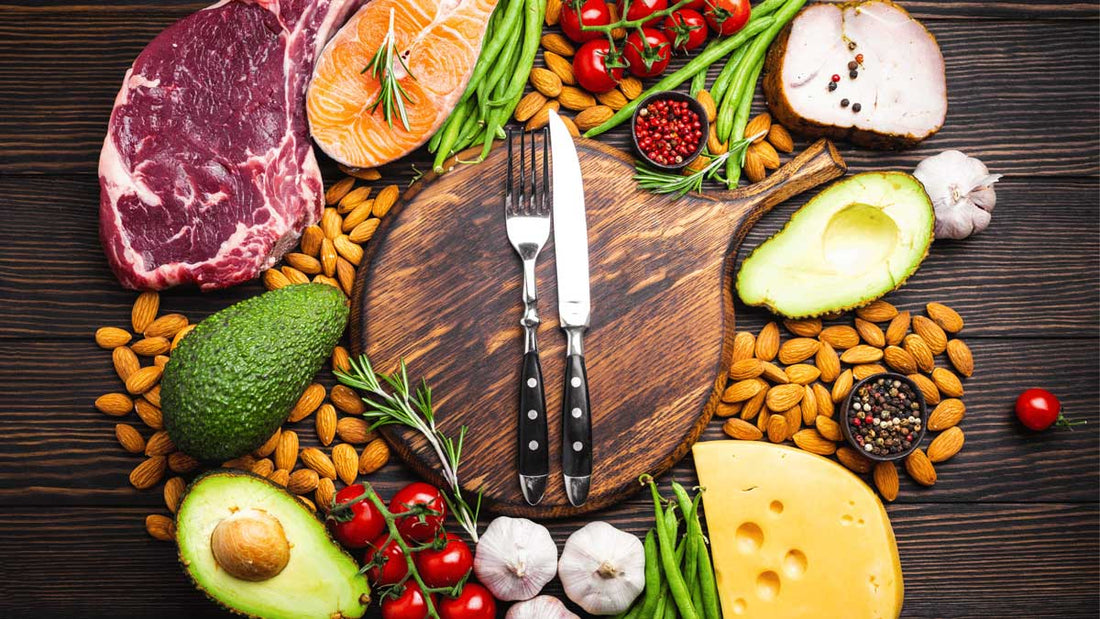Making the move to keto eating can be a change that many people do for a variety of reasons. Adapting to keto can be an adjustment. When you add in gluten intolerance, it can add a layer of adjustment. In fact, some will worry that they can’t eat keto and gluten-free at the same time. While it can be a big change, we have some tips for eating gluten-free on keto.
 Tips for Eating Gluten-Free on Keto
Tips for Eating Gluten-Free on Keto
Foods to Avoid with Keto
When moving to a keto diet, you will want to look at the foods you can no longer enjoy. The good news is, many of the items that you will need to remove include gluten as an ingredient. While you will be making a change, you may have an easier adjustment because some of the food items are items you already can’t have. Here are a few of the items you should avoid or have very small portions of when making the move to keto eating.
- Sugar-rich foods - soda, fruit juice, smoothies, cake, ice cream, candy, and other high-sugar foods. Many sugar-rich foods are gluten-rich foods.
- Grains or starches - Wheat-based products, rice, pasta, cereal, and so on. This will mean you will need to be more careful with rice-based products used as an alternative to gluten-rich foods.
- Fruit - all fruit with the exception of small portions of berries like strawberries.
- Beans or legumes - peas, kidney beans, lentils, and chickpeas
- Root vegetables and tubers - potatoes, sweet potatoes, carrots, and parsnips.
- Low-fat or diet products - Items that are promoted as low-fat or diet are often discouraged on a keto eating plan.
- Select fats - processed vegetable oil and mayonnaise are good examples.
- Alcohol - Beer, wine, liquor, and mixed drinks.
- Sugar-free diet foods - Items such as sugar-free candies, syrups, puddings, and desserts should be avoided as part of a keto eating plan.
Foods to Enjoy on Keto
Switching to a new eating plan can give you a variety of limitations but it can also allow you to enjoy many foods. Taking the time to break down what you can eat can make a big difference in your success. While there are some limits, many of the foods on keto can be gluten-free or adapted to gluten-free eating. This means you can take on keto with gluten intolerance. Here are a few of the foods you can enjoy on keto.
- Meat - Items such as red meat, steak, ham, sausage, bacon, chicken, and turkey are all safe options. When choosing items such as ham or sausage, be sure to check for gluten. Not all meats are made without gluten.
- Fish - Salmon, trout, tuna, and mackerel are all safe options when on a keto diet.
- Eggs - Eggs have some conditions tied to them but they are another food that can be eaten. Look into restrictions before adding them to your menu.
- Butter and cream - Grass-fed butter and heavy cream can be options.
- Cheese - Unprocessed cheeses like cheddar, goat, cream, blue, or mozzarella are considered acceptable for a keto diet.
- Nuts and seeds - Items such as almonds, walnuts, flaxseeds, pumpkin seeds, and chia seeds are all acceptable options.

What about “Keto” foods?
There are many food items on the market now labeled as keto. They promise to offer some of the foods you love without any non-keto options. Items such as bread, pizza, and even cakes are marketed as keto-friendly. While it may be tempting to try some of these, not all of them are created with you in mind. Instead, you will want to opt for gluten-free keto options. We have some tips for picking out the right options.
- Stick with gluten-free brands - When choosing a keto food item, you will want to stick with brands that know how to accommodate a gluten-free diet. With items such as gluten-free keto bread, rolls, and even pizza crusts, you can enjoy old favorites without fear of gluten allergy symptoms.
- Watch for cross-contamination - Cross-contamination can be a risk when picking up keto items that claim to be gluten-free. It is important to look at what other items are manufactured in the same plant. If they make gluten-containing items in their factory, there is a chance of gluten contamination to the items you are purchasing. Be sure to go with a company who is committed to avoiding cross-contamination.
- Choose gluten-free keto-approved flours/ingredients - The ketogenic diet will allow you to have some gluten-free flour options for cooking. Those include almond, chia, and coconut. Using these flour options can let you enjoy a favorite recipe without worrying about breaking your keto diet guidelines.
What about eating out?
It can be special or even necessary at times to eat out. Finding gluten-free options can be a frustrating part of eating out. Adding in gluten-free eating can add a layer of difficulty. While it can seem like you won’t be able to eat out on keto, there are still options. Here are a few tips for gluten-free keto eating when eating out.
- Check menus before you go - Many restaurants will have online allergy menus that list their gluten-free offerings. Take some time before visiting the restaurant to look over the menu and see which options accommodate both of your dietary needs.
- Ask to speak to the chef/cook - When you arrive at the restaurant, ask to speak with the chef or the cook. This will give you the chance to ask about how your food is being prepared and see if there is a risk of cross-contamination. This is also a great way to ask about any ways that foods on the menu can be modified to accommodate your dietary needs.
- Bring seasonings and condiments - While some places may accommodate you on prep, the food can be a bit bland due to modifying items. Bringing sauces and condiments that make the food taste better while following your keto and gluten-free needs can be a game-changer. It makes a good meal out into a great one. Bring items you know are safe and add them to a modified dish at the restaurant you are eating at after the food has been prepared.
With a little pre-planning and know-how, eating both keto and gluten-free is very doable.

